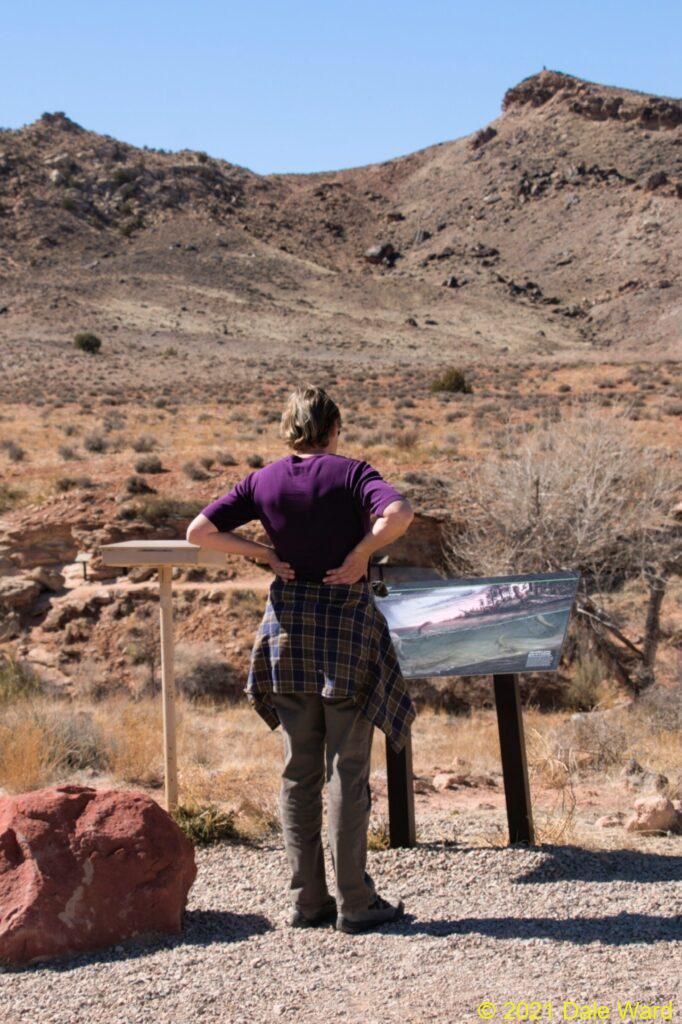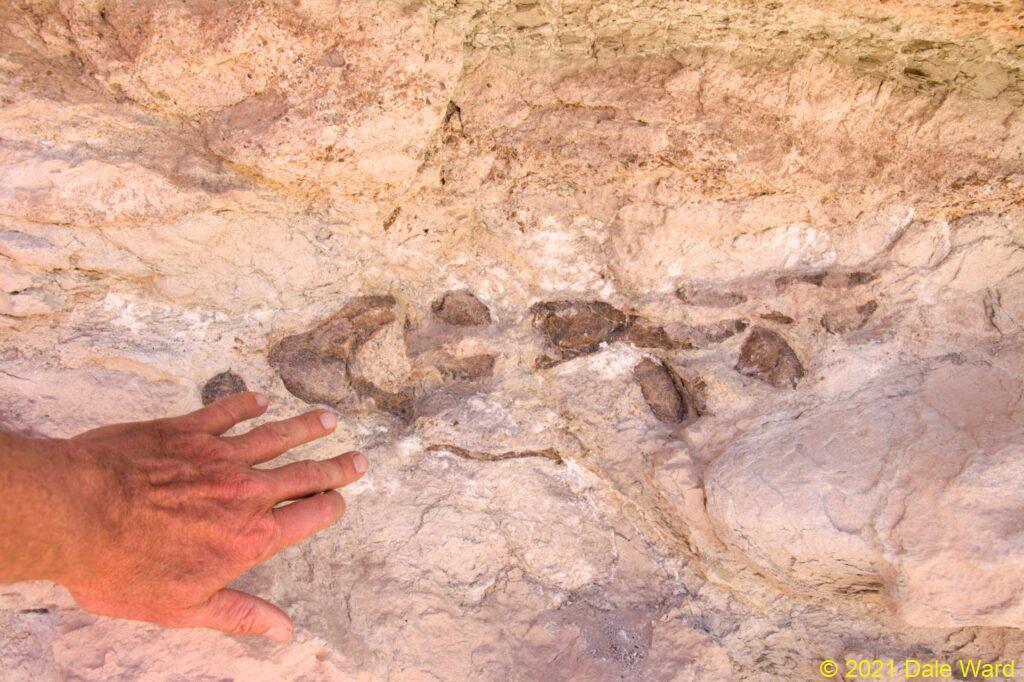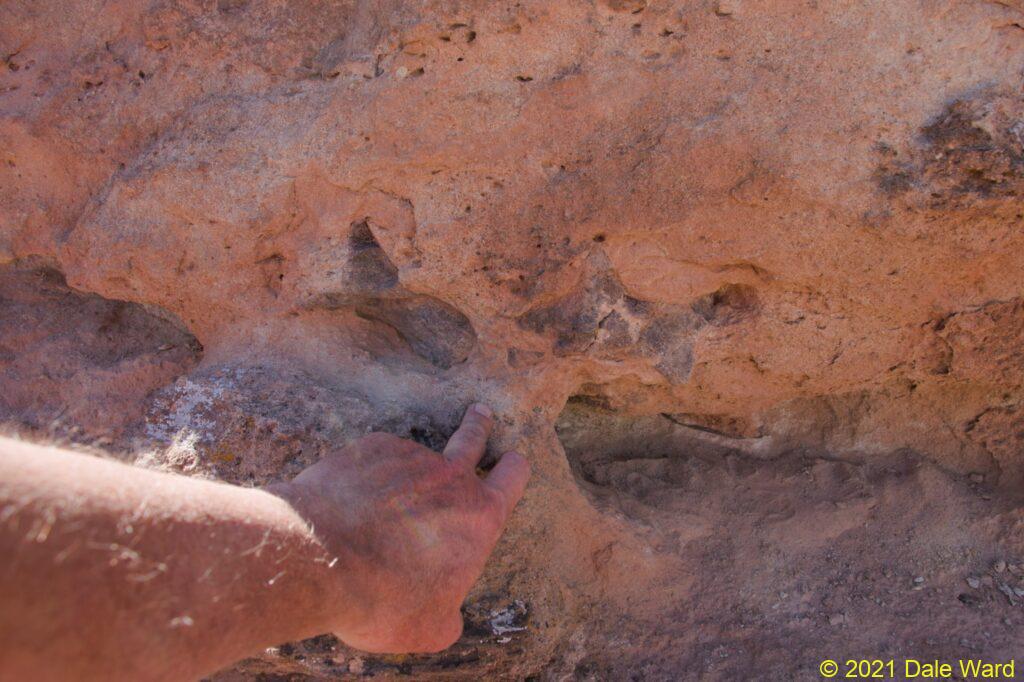Mill Canyon Dinosaur Trail
Visiting the Mill Canyon Dinosaur Trail
Just a little ways from the Mill Canyon Dinosaur Tracksite is the Mill Canyon Dinosaur Trail. This is a fascinating place to visit. Like Colorado’s Trail Through Time, this trail highlights unexcavated Dinosaur fossils. So, fossils in their natural habitat, if you will.
You follow an easy hiking trail past BLM interpretive signs that tell you where to look for the fossils in the rocks.
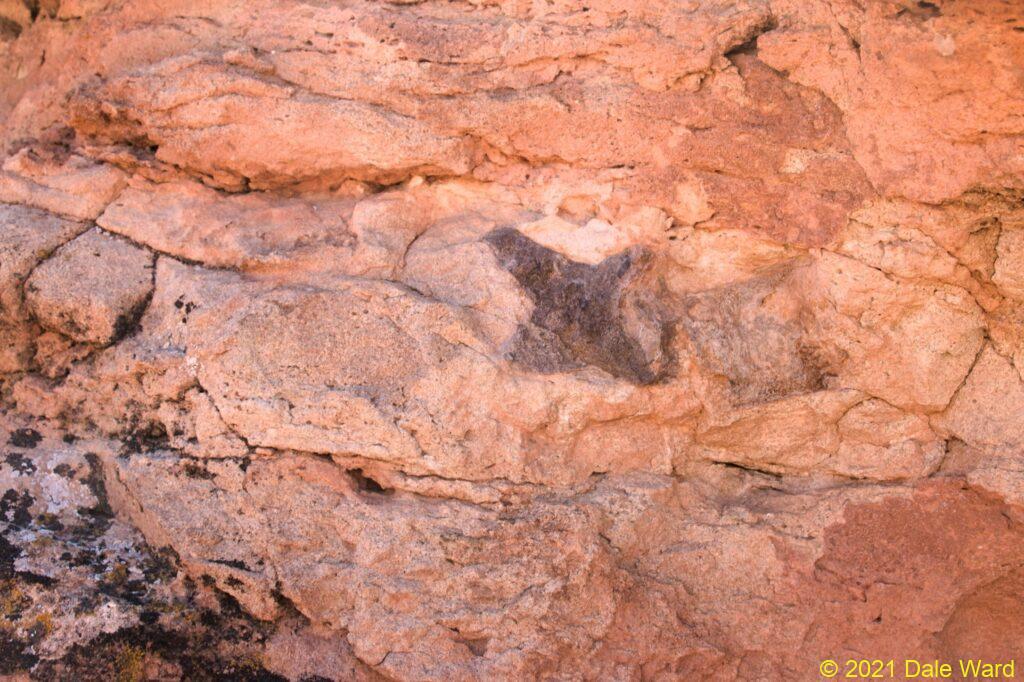 The dark object near the center of this photo is a cross-section of a sauropod, probably _Camarasourus_, vertebral bone.
The dark object near the center of this photo is a cross-section of a sauropod, probably _Camarasourus_, vertebral bone.
Rather than seeing fully excavated skeletons wired together into action-figure poses, you see the bones as they were found, partially hidden and embedded in rock. Peering out from the rock.
Juxtaposing this ‘live’ view of fossils with the beautiful displays in museums is really, really interesting.
Seeing these fossils here versus in a museum is like comparing the experience of seeing desert wildlife in a spectacular BBC-style nature documentary versus what you see when you are actually walking through the wilds. In reality, you typically don’t see the pre-digested, detailed stories portrayed on television. Rather, you get the barest glimpse of a creature if you’re lucky, leaving you to puzzle out the full story.
One of the main things I learned on this trip was that I could be walking by fossils all the time and not realize it. I could see the fossils on the trail after the interpretive signs told me where to look, but I wouldn’t have noticed most of them without the signs.
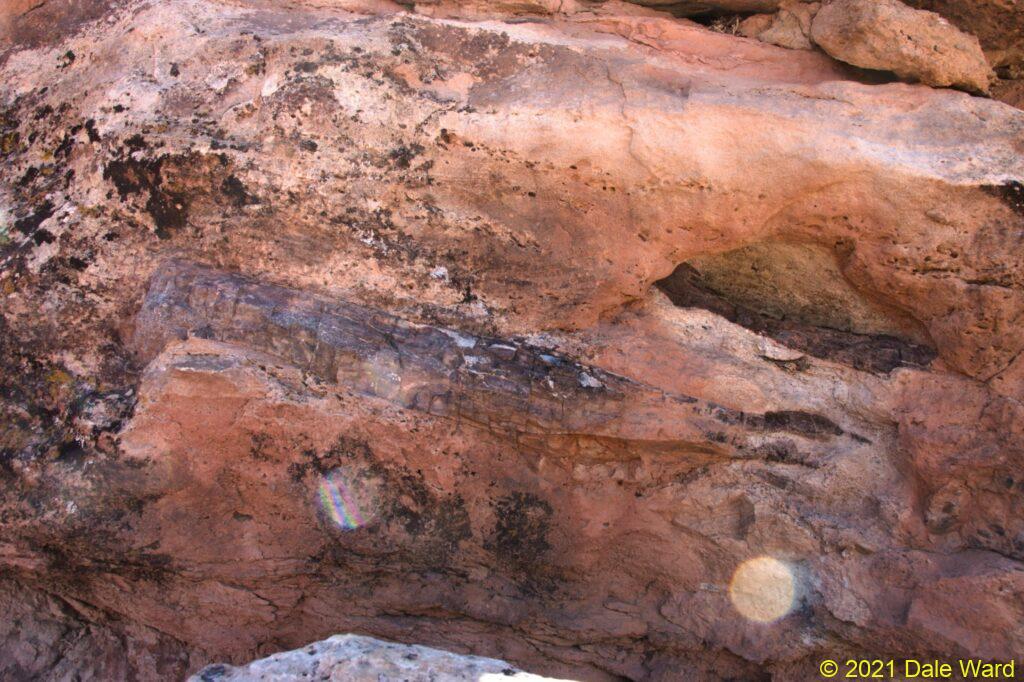 _Camarasaurus_ leg bone - horizontal dark streak in the center-left of the photo. This was one of the few bones that I _might_ have seen without the signs telling me where to look.
_Camarasaurus_ leg bone - horizontal dark streak in the center-left of the photo. This was one of the few bones that I _might_ have seen without the signs telling me where to look.
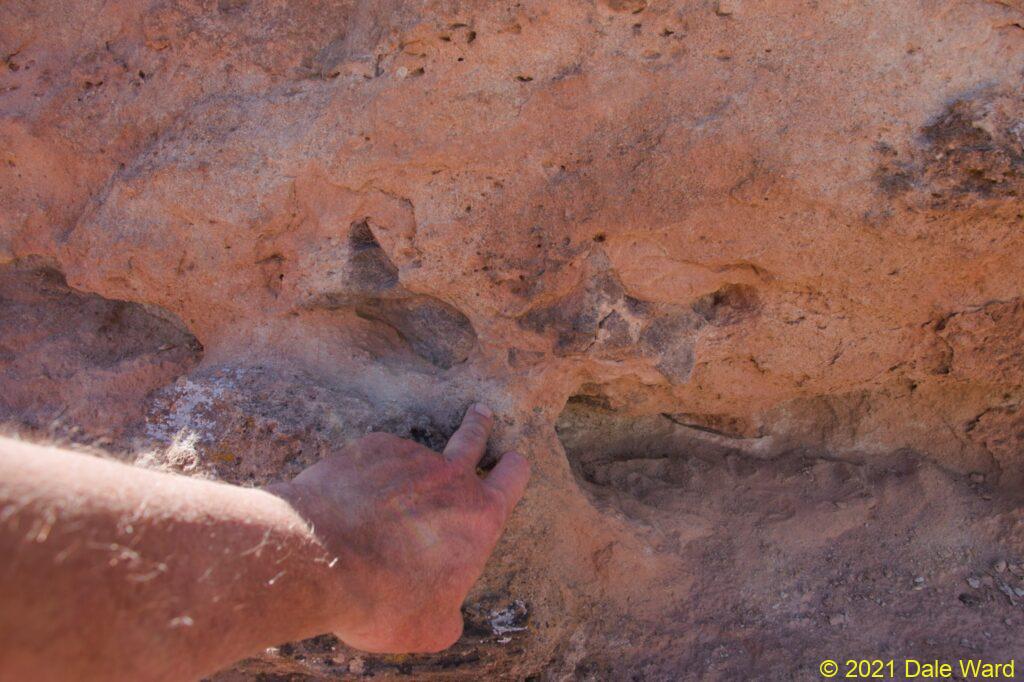 Numerous scattered sauropod vertebrae
Numerous scattered sauropod vertebrae
Another thing that I enjoyed about this trail was the notion of the fossils being in the ground, slowly emerging as the rock around them wears away.
In Craig Childs’ book “Atlas of a Lost World”, he mentions the Mammoths and other Ice Age megafauna that were frozen into the permafrost in Siberia. He says that some Siberian shamen thought the mammoths traveled through the underworld, and we would saw them when they emerged from the Earth. After all, what else would the Mammoths be doing, buried in the permafrost as they were?
That’s an image I love. It’s more of a stretch here, since we’re just looking at fossilized bones and not actual preserved Dinosaurs, but I like to imagine the Dinosaurs as living, traveling, through the Earth as we walk above.
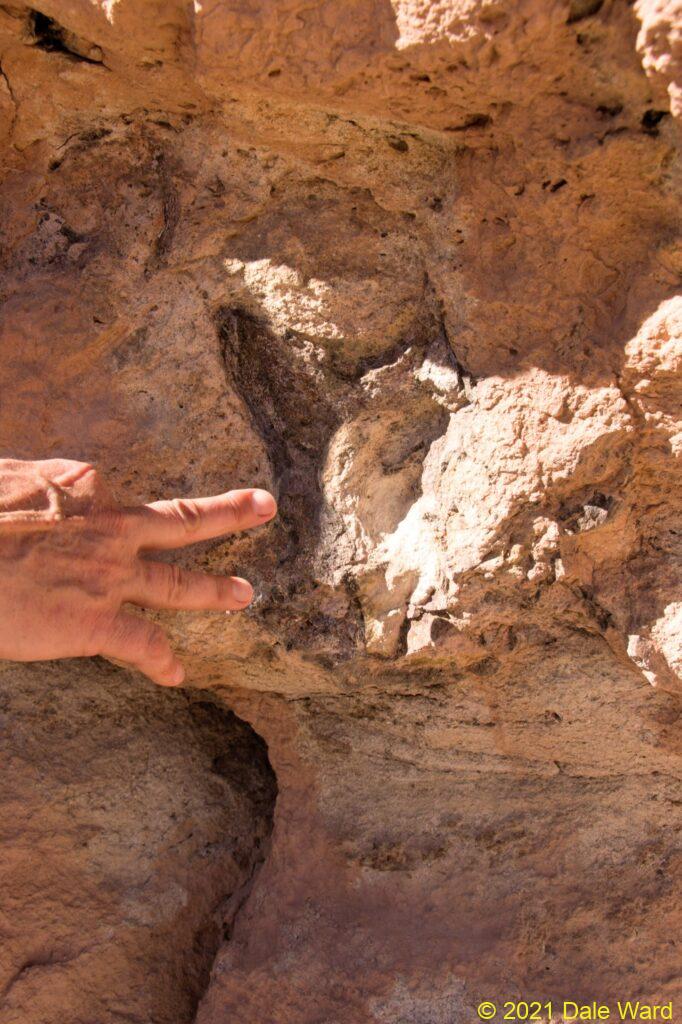 My fingers are pointing at another fossilized bone.
My fingers are pointing at another fossilized bone.
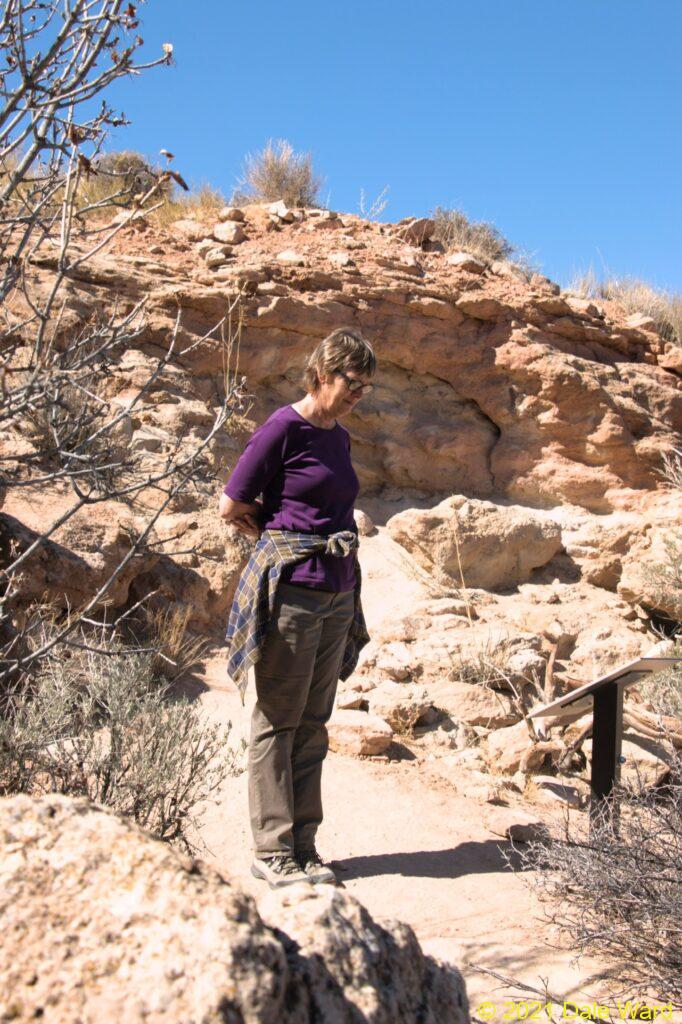 The trail is an easy walk, the scenery is beautiful, and the signage is perfectly done.
The trail is an easy walk, the scenery is beautiful, and the signage is perfectly done.
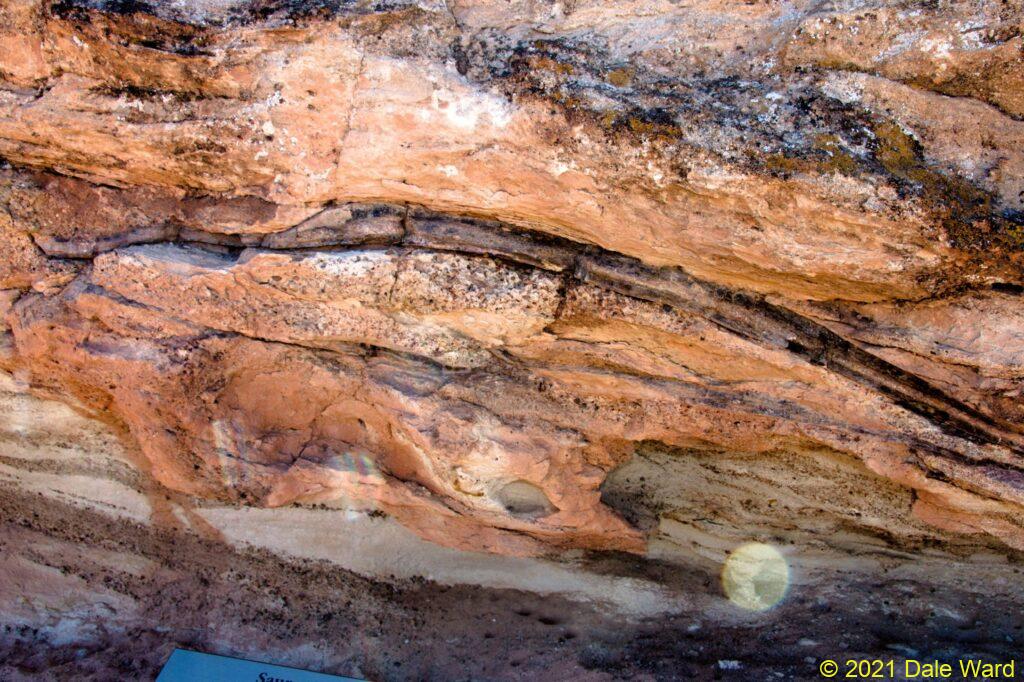 Camarasaurus scapula, seen edge-on (the dark, arched object in the rock running left-to-right in the photo)
Camarasaurus scapula, seen edge-on (the dark, arched object in the rock running left-to-right in the photo)
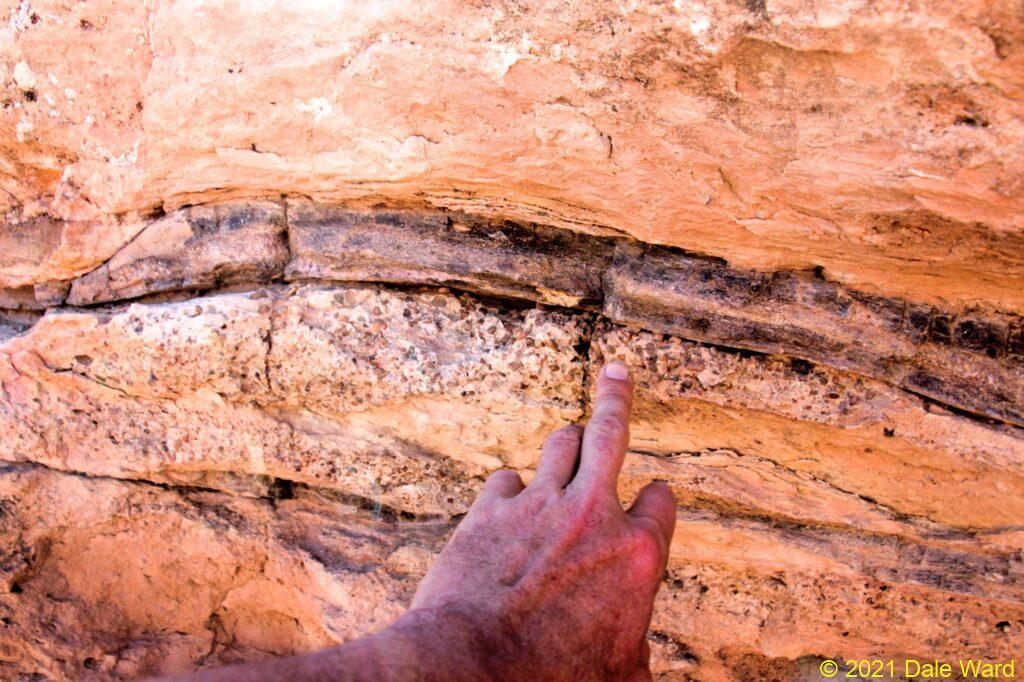 Camarasaurus scapula, seen edge-on (the dark, arched object in the rock running left-to-right in the photo)
Camarasaurus scapula, seen edge-on (the dark, arched object in the rock running left-to-right in the photo)
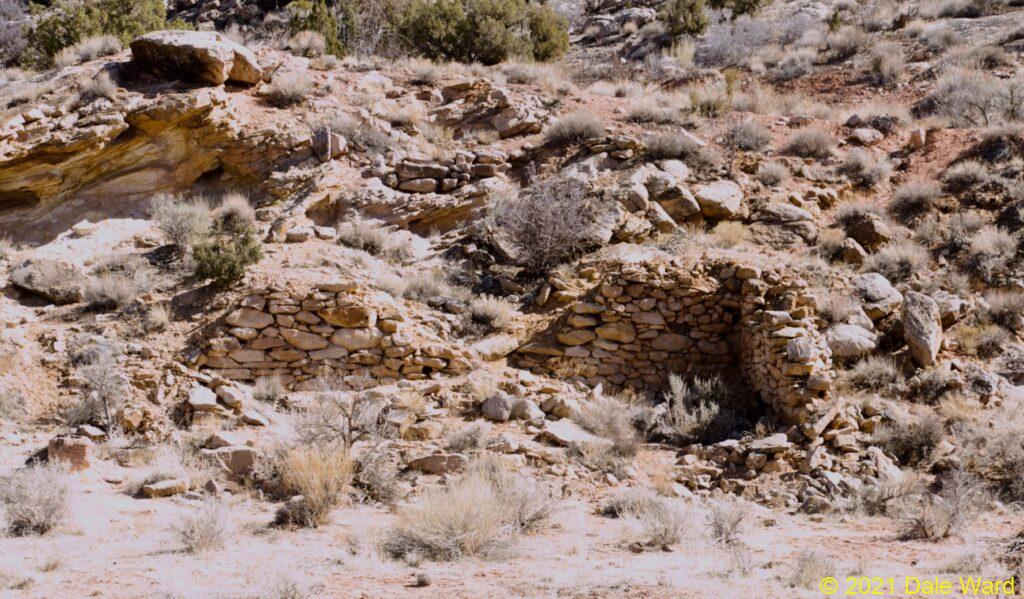 Across the canyon, you can see the old Copper Mill for which “Mill Canyon” was named.
Across the canyon, you can see the old Copper Mill for which “Mill Canyon” was named.
The fossils at this site are from the Upper Jurassic, roughly 150 million years ago. The Mill Canyon Dinosaur Tracksite that we had visited earlier in the day was more recent - it was from the Lower Cretaceous, roughly 112 million years ago.
To put those times into perspective - Tyrannosaurus rex lived roughly 66 million years ago. So T. rex lived roughly 84 million years after the Dinosaurs at the Mill Canyon Dinosaur Trail lived.
That means that we, in the year 2020, are closer in time to Tyrannosaurus rex than Tyrannosaurus rex was to the Mill Canyon Dinosaur fossils.
That blows my mind. Oceans of time, indeed.
Sources:
Childs, Craig. 2018. Atlas of a Lost World: Travels in Ice Age America. Pantheon Press. 288 pages. ISBN 9780307908650.
